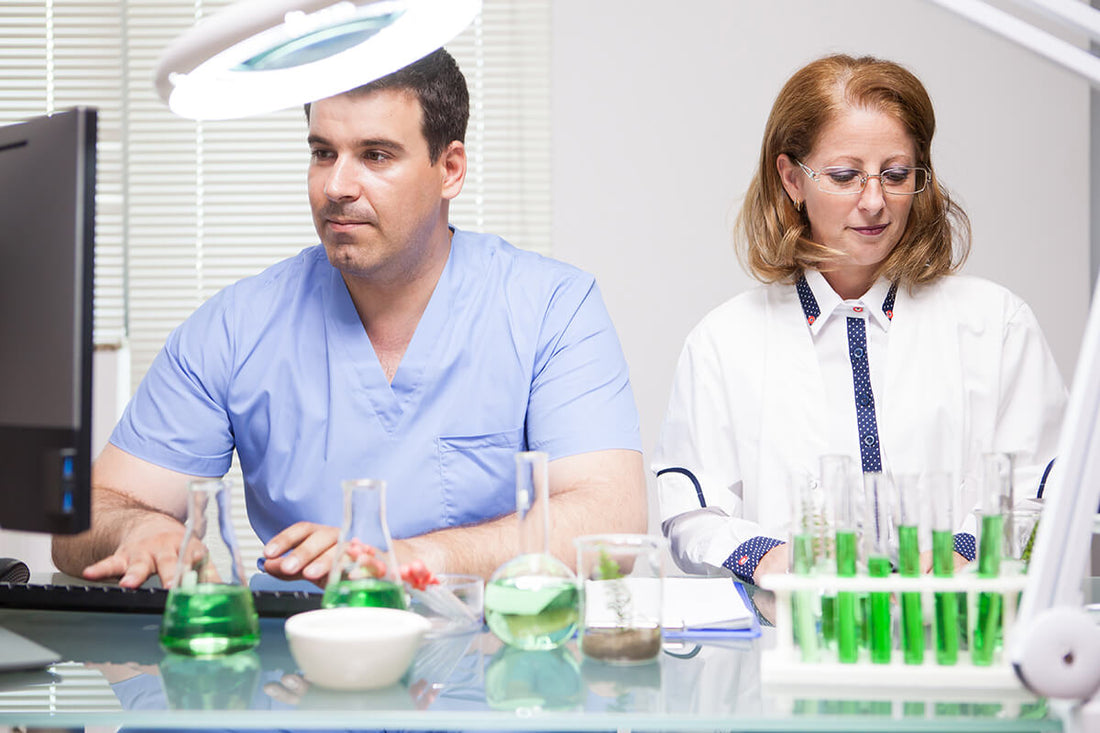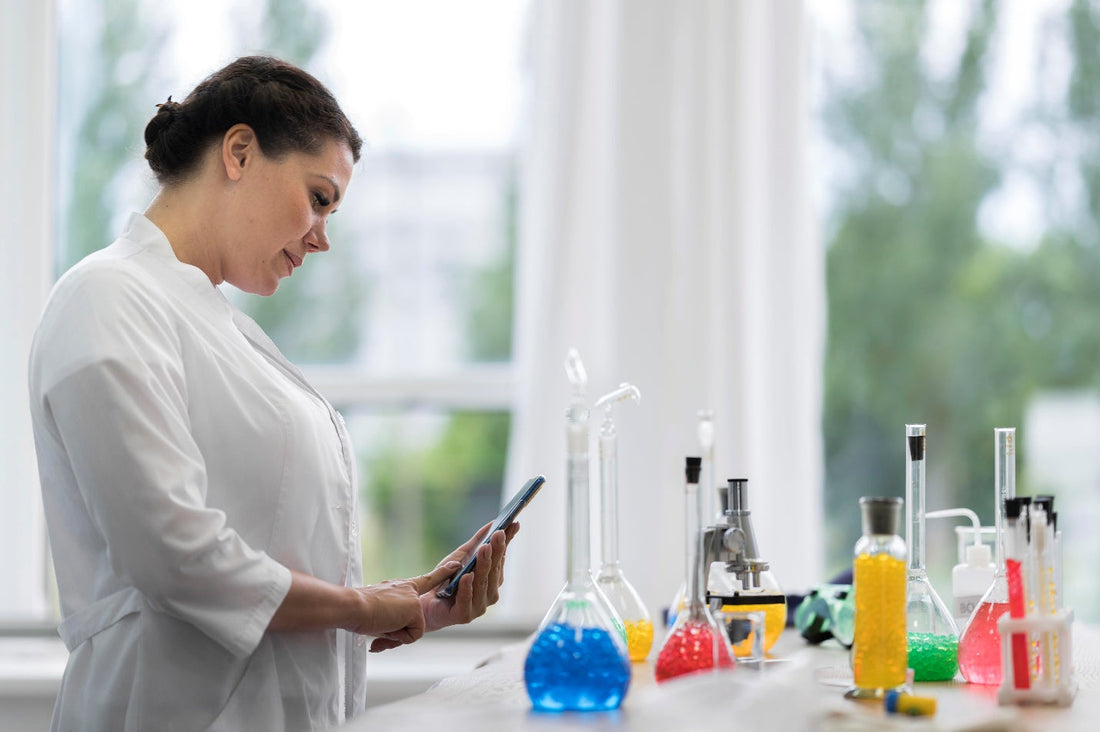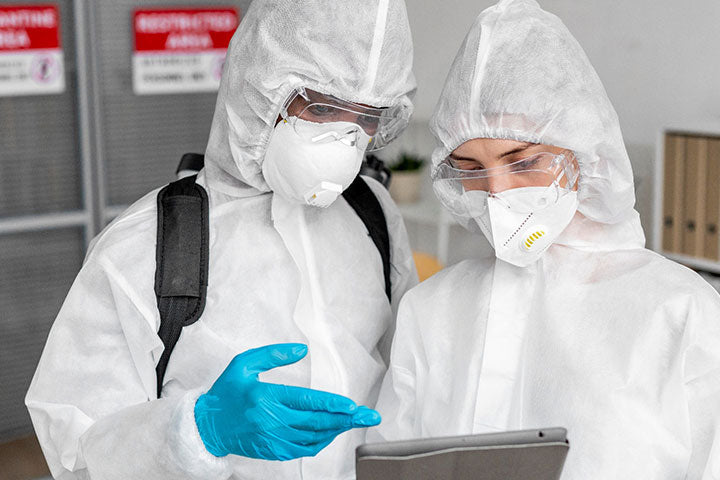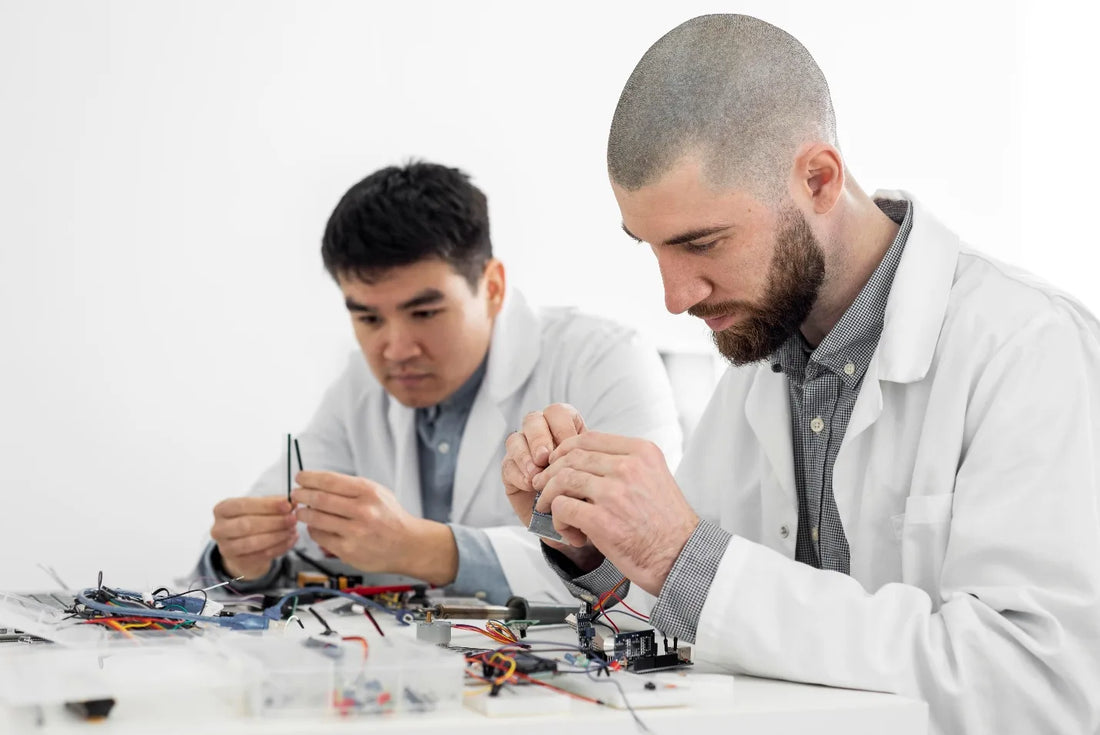Lab Equipment Repair Secrets Technicians Don’t Usually Share

Summary:
-
Regular lab equipment maintenance is critical because it extends lifespan, ensures accuracy, enhances safety, reduces downtime, and saves money.
-
Early equipment failures are rarely manufacturing defects. Most issues come from improper cleaning, environmental stress, or power fluctuations.
-
Not every repair needs a technician. Basic fixes like replacing fuses, unclogging filters, or checking connections can be handled in-house. Major repairs should be left to certified professionals.
-
Spare parts aren’t equal. OEM parts are most reliable, generic and refurbished parts vary in safety and performance. Cutting corners with parts risks accuracy and compliance.
-
Without calibration, results may be unreliable, non-compliant, and more costly in the long run. Calibration ensures accuracy, compliance, and efficiency.
-
Equipment location affects performance. Placement near doors, vents, or sunlight can shorten lifespan and increase servicing needs.
-
Choosing the right repair partner matters. Look for certified, experienced providers with quick response times, broad services, and proven compliance expertise.
-
Ignoring servicing has hidden costs. Risks include voided warranties, safety hazards, regulatory penalties, and expensive downtime.
Introduction
Laboratories depend on precision, which can only be achieved with reliable equipment. When instruments fail, the consequences go far beyond inconvenience, they disrupt research timelines, compromise test results, and pose compliance risks. This is why laboratory equipment servicing is not just a routine task but a cornerstone of safe, efficient, and productive lab operations.
A study by Honeywell reports that preventive maintenance can extend equipment lifespan and reduce downtime by nearly 40%. This helps save thousands of dollars in emergency repairs and replacements. Yet, many labs still see equipment servicing as optional, and often delay them until the equipment breaks down.
In this article, we will explore some industry secrets on why lab equipment maintenance matters, the real cost of ignoring it, and tips to protect your equipment.
Why Regular Lab Equipment Maintenance Matters
Laboratory equipment is the backbone of scientific research and testing. Without consistent care of your medical lab supply, even the most advanced instrument can fail. Here are key reasons why maintenance matters:
-
Extended Lifespan: Regular lab equipment maintenance services reduce wear and tear, prolonging the lifespan of the equipment. Preventive care, including cleaning, lubrication, and timely repair, keeps your instruments working smoothly, reducing the need for costly replacements.
-
Reliable Data and Accurate Results: A well-maintained equipment produces consistent and accurate measurements, which is vital for credible research and quality assurance. Regular calibration also prevents data errors and ensures the reliability of experimental outcomes and ensures test results meet standards set by agencies like ISO and FDA.
-
Enhances Safety: Laboratory environments can harbor potential hazards, ranging from chemical exposures to biological agents. Malfunctioning equipment can lead to accidents, spills, or exposure incidents that endanger laboratory personnel and the integrity of the research being conducted. Routine maintenance includes safety checks for issues like electrical problems or ventilation, before accidents occur.
-
Reduced Downtime: Investing in preventive maintenance minimizes unexpected equipment failures and disruptions, keeping critical equipment available and functional when it’s needed the most.
-
Cost Savings: Addressing minor maintenance early helps reduce the need for costly replacements and repairs. It also extends the lifespan of your equipment, reducing the likelihood of a full breakdown and new equipment purchase.
Secret #1: The Real Reason Your Equipment Fails Early
Most lab managers assume that equipment fails because of a manufacturing defect or bad luck, when in fact, most equipment failures are due to misuse, neglect, or skipped maintenance.
The biggest culprits are:
-
Improper Cleaning: Environmental factors such as dust and humidity play a big role in equipment malfunction. Dust affects functionality and accuracy of equipment like centrifuges and pipettes, eventually leading to friction and increasing wear and tear.
-
Environmental Stress: Instruments placed near HVAC vents, direct sunlight, or high-humidity zones deteriorate faster.
-
Power Fluctuations: Voltage spikes and electrical surges damage sensitive electricity-powered equipment, such as spectrophotometers and incubators.
So, if your lab equipment is working fine but suddenly starts malfunctioning, it is not necessarily a manufacturing defect. It could be any of the above issues that technicians don’t really talk about.
Secret #2: Some Repairs Can Be Done Without a Technician

Another secret most technicians don’t want you knowing is that some repairs don’t require calling in a specialist. While major issues like motor failures or airflow imbalances should always be handled by a professional. There are basic fixes that your lab staff should be able to do with minimal training. Some of them include:
-
Replacing fuses or power cords when an instrument does not power on.
-
Cleaning clogged filters in centrifuges, water baths, or incubators.
-
Resetting error codes by following manufacturer guidelines.
-
Checking for loose connections before assuming a part has failed.
Meanwhile for equipment procedures such as BSC and centrifuge repair should be done by a certified professional.
Secret #3: Not All Spare Parts Are Created Equal
When it comes to laboratory equipment servicing, a hidden truth is that not all spare parts deliver the same level of performance or safety. Choosing the wrong type can reduce your equipment’s lifespan or even compromise results.
There are three main categories of replacement parts:
-
Original Equipment Manufacturer (OEM): These parts are designed specifically for the equipment, offering the highest level of reliability.
-
Generic/Aftermarket Parts: These are often cheaper, but may not meet the same performance or safety standards.
-
Refurbished Parts: These parts are sustainable or cost-effective when sourced from certified providers.
The International Society for Pharmaceutical Engineering (ISPE) encourages using validated and verified parts for pharmaceutical manufacturing. This is a fundamental aspect of their guidelines, such as the Good Automated Manufacturing Practice (GAMP) aimed at ensuring quality and compliance.
Cutting corners with parts may save money in the short term, but the long-term risks range from inaccurate results to regulatory non-compliance, which outweigh any potential savings you might get. So when choosing a part, prioritize one that not only suits your budget but also enhances performance.
Secret #4: Calibration is Often Skipped — But It Shouldn’t Be
Calibration is one of the most overlooked steps in laboratory equipment servicing. Technicians often focus on fixing visible issues such as replacing a worn seal, repairing a fan, or tightening a loose connection, while quietly skipping calibration to save time. But this shortcut can leave equipment running but not performing optimally.
Calibration is what ensures an instrument delivers precise and repeatable results. World Health Organization (WHO), emphasizes calibration as a crucial element of laboratory quality assurance, especially in facilities where accuracy directly impacts research outcomes and regulatory compliance.
Some reasons calibration should always be included in servicing include:
-
Accuracy and Reliability as equipment that is not calibrated can deliver false readings.
-
Compliance as ISO/IEC 17025 requires documented calibration as proof of servicing.
-
Cost saving because regular calibration reduces failed experiments, helping to save reagents and other consumables which could have been used.
Secret #5: Location Matters More Than You Think
When an equipment is repaired, people focus on the technician’s skills or quality of the replacement parts. But one factor that technicians don’t usually share is that the location of the equipment itself has a huge factor on its performance.
Where and how your equipment was installed can determine how often it needs servicing and how long it lasts. For instance:
-
Placing biosafety cabinets (BSCs) near doors, vents, or high-traffic areas can affect airflow and ventilation, forcing technicians to recalibrate more often.
-
Instruments like balances, incubators, and spectrophotometers are sensitive to environmental fluctuations. Improper placement can increase the need for servicing and repair.
How to Choose the Right Lab Equipment Repair Partner
Most labs depend on service providers to keep equipment running at peak performance. Choosing the wrong partner can mean half done maintenance and repairs, more downtime, and compliance issues. While the right partner can help extend your equipment’s lifespan and enhance your lab’s performance.
Here are some tips to choosing the right provider:
-
Technical Expertise and Certification: Choose partners with a proven track record and extensive experience to ensure correct diagnostics and practical solutions. Also ensure such a partner is authorized by the manufacturer to provide servicing and repair services.
-
Availability and Response Time: Prioritize a partner that has quick response times and 24/7 availability for emergency assistance to minimize downtime.
-
Range of Services: Look for a partner that offers more than just repairs. Ask about additional services such as regular inspections, performance testing, calibration, and maintenance to prevent future issues.
-
Industry Recommendations: Contact your network and peers in the scientific field for recommendations on trustworthy and dependable service providers.
-
Regulatory Compliance: Look for partners certified under relevant standards such as NSF/ANSI 49 for biosafety cabinets or ISO/IEC 17025 for calibration.
The Hidden Costs of Ignoring Professional Servicing

Skipping professional servicing might seem like a cost-saving move, especially if your equipment is performing fine. However, the cost of neglecting servicing outweigh any potential savings.
Here is what is really at stake:
-
Voided Warranties: Many manufacturers require regular laboratory equipment servicing to keep warranties valid. Skipping visits can mean footing the full bill of repairs and part replacements.
-
Safety Hazards: Malfunctioning equipment can expose laboratory personnel, patients, and the environment to biological or chemical risks.
-
Regulatory Punishment: Non-compliances with regulatory standards and practices can lead to warnings, fines, loss of business and reputation, or even suspended operations.
Conclusion
The secrets that technicians never share all have something in common – small decisions shape the lifespan and reliability of lab equipment. Skipping calibration, cutting corners on parts, or overlooking something as simple as equipment placement each adds risks that eventually show up as downtime, loss of accuracy, or higher costs.
But with the right approach to laboratory equipment servicing, those risks can be controlled and your equipment enhanced for a better operation. Book a consultation with R&D Laboratory Equipment for lab equipment repair service near me.
FAQs
1. What does laboratory equipment servicing typically include?
Lab equipment servicing usually covers inspection, cleaning, calibration, replacement of worn parts, and safety checks. This means fewer breakdowns and better compliance during audits.
2. How often should I service lab equipment like centrifuges?
Most centrifuges require servicing every 6 to12 months. High-use labs may need more frequent checks to prevent unexpected downtime and keep results consistent.
3. Is it safe to use refurbished parts in medical lab equipment?
Yes, provided they come from a certified supplier. Refurbished parts can extend the life of older instruments, but uncertified parts carry higher risks of failure and compliance issues.
4. How can I find reliable lab equipment repair service near me?
Look for providers with manufacturer certifications, ISO accreditation, and documented experience with your type of equipment. Request references from other labs before committing to a service contract.
5. Can I perform basic lab equipment repairs myself?
Minor fixes like changing fuses, cords, or cleaning filters don’t require special training. But anything involving calibration, electronics, or compliance-critical parts should be left to professional laboratory equipment servicing providers.
6. What should you do if a piece of equipment isn’t working normally?
Rather than attempting to fix it on your own, send for a lab technician or your repair service provider for help.
7. What are the disadvantages of mishandling lab equipment?
Improper use of lab equipment can result in physical injuries, sample contamination, false results, and breakdown of the equipment.
8. What role does calibration play in compliance?
Calibration isn’t optional, regulators expect documented proof. Skipping it is one of the fastest ways to fail ISO 17025 or FDA audits, even if the equipment is otherwise functional.
9. Are OEM parts always better than refurbished parts?
Not always. OEM parts ensure maximum reliability, but certified refurbished parts can be a cost-effective option for older equipment. The key is sourcing from a trusted provider with proper warranties.
10. How do I know if my current service provider is the right fit?
Evaluate transparency, certifications, and whether they explain repairs in clear terms. A strong repair partner helps you make informed decisions, not just sends invoices.






